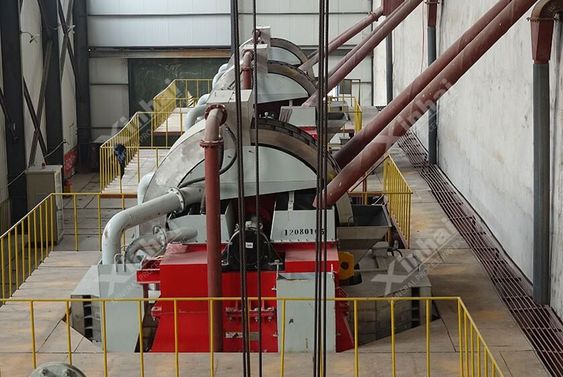Mineral processing is a crucial industrial activity that plays a vital role in extracting valuable minerals from their ores. As technology advances, the demand for efficient and integrated solutions grows. In this article, we’ll delve into the world of mineral processing, exploring its stages, scope, limitations, and the ultimate goal of achieving optimal yields. Moreover, we’ll highlight the significance of one-stop mineral processing plants in streamlining these complex operations.
Understanding Mineral Processing:
What are the 4 stages of mineral processing?
Mineral processing comprises four essential stages:
- Comminution: Breaking down large ore particles into smaller sizes through crushing and grinding.
- Separation: Utilizing physical and chemical methods to separate valuable minerals from the ore.
- Concentration: Increasing the mineral content in the ore through processes like flotation, gravity separation, or magnetic separation.
- Dewatering: Removing excess water from the mineral concentrate before further processing or transportation.
What is the last step in mineral processing?
The final step involves the dewatering of the mineral concentrate, ensuring it is ready for subsequent stages or transportation for further refinement.
Defining a Mineral Processing Plant:
What is a mineral processing plant?
A mineral processing plant is a facility where raw ores are processed to obtain marketable products. It involves a series of physical and chemical processes to extract valuable minerals while discarding the unwanted gangue.
Exploring the Scope of Mineral Processing:
What is the scope of mineral processing?
The scope of mineral processing is vast, encompassing various minerals, ores, and commodities. It extends from the exploration and extraction of raw materials to the refinement of concentrates, ultimately producing valuable products for industries worldwide.
Overcoming Limitations in Mineral Processing:
What are the limitations of mineral processing?
While mineral processing is a cornerstone of various industries, it faces limitations such as:
- Inherent Mineralogy: Challenges arise when dealing with complex mineralogical compositions in ores.
- Energy Intensity: Some processes can be energy-intensive, impacting both economic and environmental aspects.
- Environmental Concerns: The disposal of tailings and the use of certain chemicals raise environmental concerns.
- Water Usage: The industry often requires substantial water resources, posing challenges in water-scarce regions.
Optimizing Yields in Mineral Processing:
What is the yield in mineral processing?
Yield in mineral processing refers to the proportion of valuable minerals recovered from the ore. Achieving high yields is a primary objective and is influenced by factors such as ore characteristics, processing methods, and technological advancements.
The Role of One-Stop Mineral Processing Plants:
One-stop mineral processing plants have emerged as game-changers in the industry. These integrated facilities streamline the entire mineral processing journey, from ore reception to the production of final products. Here’s why they are gaining prominence:
- Efficiency: Centralized operations enhance efficiency by minimizing transportation and logistical challenges.
- Cost-Effectiveness: One-stop plants often result in cost savings by optimizing resources and reducing operational redundancies.
- Advanced Technologies: These facilities leverage state-of-the-art technologies for improved automation, data analytics, and process optimization.
- Environmental Considerations: Integrating processes allows for better control over environmental impacts, promoting sustainable practices.
Conclusion:
In conclusion, one-stop mineral processing plants represent a significant leap forward in the industry, addressing challenges and optimizing the extraction of valuable minerals. As technology continues to evolve, these integrated facilities are set to play a pivotal role in meeting the growing demand for efficient and sustainable mineral processing solutions.
For more insights into the world of minerals and industry advancements, check out Real Magazine. Their in-depth coverage keeps you informed about the latest trends, innovations, and best practices in mineral processing and related industries.
